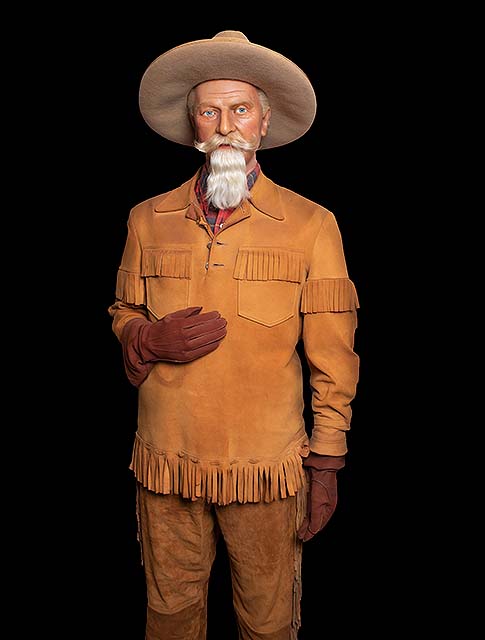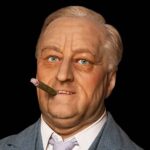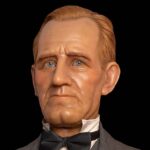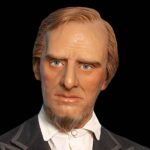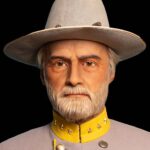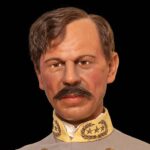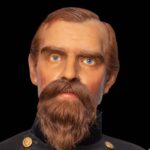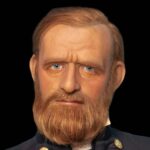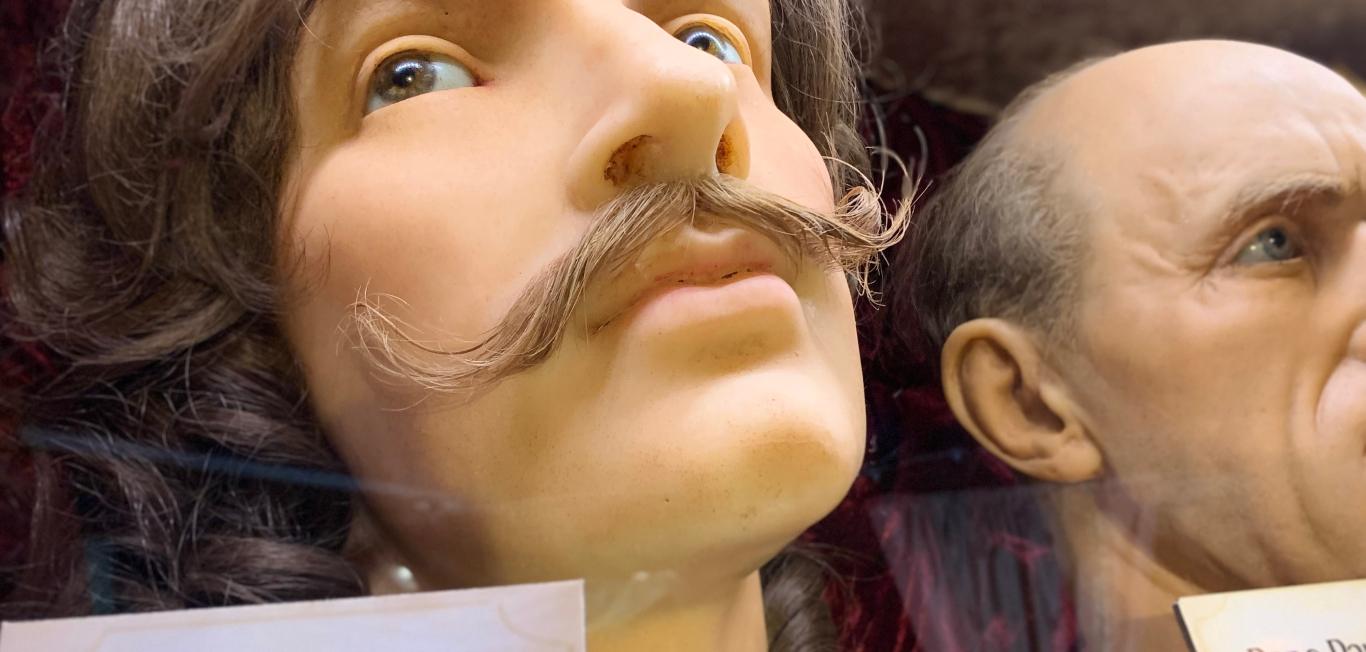The History of Buffalo Bill
Buffalo Bill’s (William Frederick Cody) history is filled with adventures that inspired the way we view the Old Wild West today. From his birth in 1846 to his death in 1917, Cody participated in some of the most significant events in American history. He was not only a serviceman, but he spoke out about what he believed was right and produced a show that portrayed a more favorable version of the Old American West.
At the age of 11, Cody joined the workforce as a “boy extra,” passing correspondence between wagon train workers. While still a teenager, Cody was recruited by the pony express, which was an operation that delivered communications on horseback from the West Coast to Mississippi in just 10 days. When Cody turned 17 in 1863, he enlisted in the military as a scout. Cody served in the American Civil War, the Utah War and the Indian War. Following the American Civil War, William Frederick Cody was an avid buffalo hunter, killing 4,282 buffalo within 18 months to supply the Kansas Pacific Railway with meat.
Cody’s nickname was earned in an eight-hour buffalo hunting contest to determine which of two hunters, both named Bill, would be crowned the notorious “Buffalo Bill.” In his later life, Buffalo Bill developed a show called Buffalo Bill’s Wild West. This show quickly became an international sensation and drew in crowds to experience the Wild West that inspired today’s tales of cowboys and Indians. Buffalo Bill was able to use his platform to portray American Indians, which in turn, preserved some of their traditions. Cody also fought for fair wages for the women on his crew, stating that any woman who can do the same job as a man deserves the same wage. By the time of his death, Bill Cody was a household name, leaving behind a lasting legacy.
DID YOU KNOW?
Buffalo Bill was able to use his platform to portray American Indians, which in turn, preserved some of their traditions.
Must-Know Facts About Buffalo Bill
Bill Cody was an advocate for American treaty rights.
Much of Cody’s adolescence and young adult life was spent fighting Indians and assuming control over their territories for the U.S. to continue its expansion west. Cody’s role in the military required him to kill Indians to claim their land, but personally, he had great respect for his opponents, as they were at war to defend their own land and fight against the broken promises of the U.S. government. Later in life, Cody cast American Indians to portray themselves in his Wild West show to provide authenticity for the audience. American Indians working in the Wild West show had a platform that enabled them to preserve their traditions.
Bill Cody became a member of the Freemasons when he was 24.
One of Cody’s close friends from the Civil War, Captain W.B. Brown, ordered the formation of a lodge beneath the Grand Lodge of Nebraska in 1870. Cody petitioned to be a member of this masonic lodge and was granted membership by the time of his 24th birthday. Cody was a committed Brother and reached two significant ranks of brotherhood; Cody became a Knights Templar in 1889 and achieved a 32-degree rank in the Scottish Rite of Freemasonry in 1894.
Buffalo Bill is rumored to be buried in two locations.
When Bill Cody died in 1917, there were discrepancies concerning his requested burial arrangements. Cody’s wife and children claimed that he wanted to be buried on Lookout Mountain in Colorado; meanwhile, other family members were insistent that he be buried in Cody, Wyoming, the town that he founded. Legend says that a “body swap” was performed to move Cody’s body from Lookout Mountain to Wyoming pre-burial, but no one truly knows.
William Frederick Cody came from Quaker descent and was an abolitionist.
Cody’s mother was the descendent of Quakers, but there is no evidence that Bill Cody was raised Quaker. Historians suggest Bill Cody may have had Quaker influence in his upbringing, as that denomination had a large role in the abolitionist movement. Cody’s father was also known to speak out against slavery. Between his mother’s family history and his father’s advocacy, antislavery was a tenet that influenced Bill Cody’s life.
Buffalo Bill was once the most notable character in the world.
Buffalo Bill’s Wild West Show quickly grew to be popular in the U.S. and would soon become an international tour traveling through much of Europe. Throughout the duration of the Wild West Show, Cody met many influential people and performed for dignitaries in both the U.S. and Europe.
William Frederick Cody is a Medal of Honor recipient.
Medal of Honor recipients are awarded this designation when they go above and beyond the call of duty in war. Bill Cody was known to accept hazardous quests that no other man would take, which ultimately earned him this prestigious award for his service in the Indian War. By the end of Cody’s military career, he was not only involved in 16 Indian attacks but also killed and scalped Yellow Hair of the Cheyenne tribe.
Buffalo Bill’s
Early Years
Buffalo Bill’s biography begins in 1846. He was born William Frederick Cody on a farm outside Le Claire, Iowa, to Isaac Cody and Mary Ann Bonsell Laycock. Isaac Cody moved his family to Fort Leavenworth, Kansas, after selling his property in Scott County, Iowa, in 1853. Moving to Leavenworth gave William Frederick Cody, known as Bill Cody in his adolescence, a firsthand account of what living in a town with conflicting views on slavery was like. The Kansas Territory was predominantly proslavery before the American Civil War, leaving the Cody family in a vulnerable position.
DID YOU KNOW?
Buffalo Bill was born William Frederick Cody on a farm outside Le Claire, Iowa.
Isaac Cody was an abolitionist and, therefore, a minority in this conviction, which ultimately sealed his fate. Shortly after the Codys moved to Leavenworth, Isaac was invited to a meeting at Rively’s Trading Post, where he was asked to speak in a room full of slavery proponents. His audience did not favor his empowering speech on antislavery. In fact, his speech angered the crowd so much that he was stabbed in the chest twice by an audience member with a Bowie knife. After this event, the Cody family began receiving threats from proslavery advocates. In an attempt to protect himself and his family, Isaac moved out of town, leaving Bill and Mary Ann behind. Isaac had plans to return to Leavenworth but unfortunately would not survive the trip. In April 1857, on his way back to Kansas, Isaac made a stop in Cleveland, Ohio, where he would gather 30 abolitionist families to populate the Leavenworth area with antislavery advocates. On the journey from Ohio to Kansas, Isaac fell ill with a respiratory infection. Due to kidney disease and persisting problems from his stab wounds, Isaac succumbed to illness.
After his father’s death, Bill Cody, aged 11, would take on the burden of financially providing for his family. The inception of Bill Cody’s infamous biography began when he took up the job of “boy extra” for a freight carrier. This role involved being a messenger and riding, on horseback, the length of the wagon trains to pass messages back and forth for drivers and laborers. From there, he joined Johnston’s army as a scout and assumed the role of “Indian killer” in the Utah War. In 1860, the gold rush had been over for about five years, but gold fever was still alive and well. When 14-year-old William Frederick Cody got word that gold was found at Fort Colville, he began to make his way to California to work in the goldfields. On his way to California, Cody was recruited by the pony express. The pony express secured the ability to send communications from the East to the West, where correspondence could be delivered in only 10 days. From 1863 to 1876, Bill Cody served his country in various military roles. Most of Cody’s military experience was as a scout; Cody was a Union scout during the American Civil War. He later enlisted in the 7th Kansas Cavalry. Postwar, Cody served as a civilian scout for the U.S. Army and ended his military career as a scout for the 3rd Cavalry. Throughout the duration of his duties, Bill Cody became known as an expert marksman, particularly with buffalo. From 1867 to 1868, Cody hunted buffalo to supply meat to laborers along the Union Pacific Railroad. William Frederick Cody became known as the buffalo killer and thus began his work as a guide to desolate Indian land as the U.S. continued its expansion west.
Buffalo Bill’s
Wild West Show
Buffalo Bill’s Wild West Show was an international sensation, touring for 30 years from 1883 to 1913. Nearly every piece of Cody’s show was authentic. Staying true to history, the buffalo and wagons were all real and traveled with Bill on tour. Buffalo Bill also invited Native Americans to tour with him to provide an accurate representation of their heritage. The cowgirls, however, were fake. Annie Oakley was a real woman, but she was neither western nor a cowgirl. In fact, Oakley’s first time out west was on tour for the Wild West Show. Annie Oakley quickly became an icon of the West and headlined Buffalo Bill’s Wild West Show as a sharpshooter alongside her husband, Frank Butler.
DID YOU KNOW?
Nearly every piece of Cody’s show was authentic.
The Wild West Show was essentially an autobiographical play on Cody’s life. All of the achievements we know Buffalo Bill for today were reenacted onstage to entertain the crowds and give the world insight into what the Wild West was all about. Of course, you can’t have an act without exaggeration. For Buffalo Bill’s own entertainment, he never confirmed exactly which parts of the show were fantasy and which were true events. In an effort to romanticize the American frontier, Indian actors were portrayed the way the U.S. government saw them — as assailants who broke treaties and attacked settlers. During its tenure, Buffalo Bill’s Wild West show grew, and in 1893, the show became known as Buffalo Bill’s Wild West and Congress of Rough Riders of the World. The Congress of Rough Riders of the World was made up of performers from Mongolia, Arabia, North Asia and more. They opened the show with a parade on horseback and entertained the audience with rodeos, staged races, sideshows and other activities that would go on to inspire films and stories about the U.S.’ western expansion.
By the end of Buffalo Bill’s Wild West tenure, the entertainment level grew to be comparable to that of Barnum & Bailey’s circus. One of the biggest acts of the show was the reenactment of the Battle of Little Bighorn, with Buffalo Bill playing Custer for Custer’s Last Stand. Buffalo Bill sold his show to Gordon “Pawnee Bill” Lillie in 1903. From then until 1913, Buffalo Bill and Pawnee Bill traveled together as a two-man act. They stopped touring when the show went bankrupt.
FAQs
What was Buffalo Bill’s cause of death?
Kidney failure
What is Buffalo Bill famous for?
Buffalo Bill is famous for being a rider in the pony express, a scout in the American Civil War, an advocate for American Indians and antislavery, and ultimately, his Wild West Show.
How did Buffalo Bill die and when?
In January 1917, Buffalo Bill was visiting his sister in Denver, CO. During his visit, Buffalo Bill died from kidney failure. Denver Cathedral’s Fr. Christopher Walsh performed Buffalo Bill’s baptism in the Catholic church the day before his death.
How did he get the name “Buffalo Bill?”
Cody was not the only buffalo hunter named “Bill.” Therefore, to claim the title of “Buffalo Bill,” Cody and Bill Comstock competed in an eight-hour buffalo hunt for the name. Whoever killed the most buffalo in those eight hours would win. Cody beat Comstock by 20 kills.
